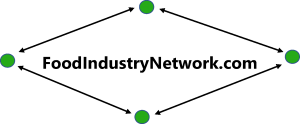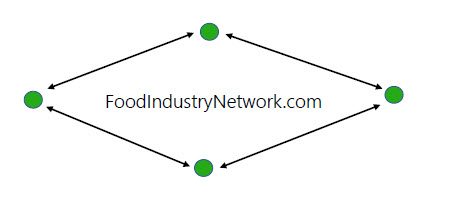Opinion: The dark side of data sharing

Data is a big part of our lives. It is built into the cell phone plan we pay for every month, our credit score and every part of every supply chain that brings us the things we use and consume.
Read Also
Lean protein popularity an opportunity for Ontario lamb
Ontario lamb producers could benefit from increased consumer demand for lamb and mutton, but import and production challenges remain. Lamb…
It can be used to spot patterns, optimize operations, save money and create better end results.
There’s lots of evidence to support anyone who views this technology as a boon to humanity.
But, like most tools, it can be misused. Whether the result is boon or bane depends entirely on the operator.
That has always been the case. Hammers can build things up or smash them down, but we aren’t banning hammers or refusing to purchase them. We understand that virtually everyone buying a hammer has a benign intention. Likely, they want to build something.
But when it comes to data, there’s a dark side. How it is compiled, analyzed and managed serves to magnify its impacts, be they good or bad.
A case currently before the U.S. courts is a potent example of how this can play out.
RealPage is a property management software company, which sounds innocuous enough. It provides a service to landlords.
But prosecutors in the District of Colombia allege things have taken a less innocent turn, to the detriment of thousands of people.
They’re suing the firm and 14 of the district’s largest landlords, alleging they colluded to illegally raise rents by collectively sharing their data with the company, affecting 50,000 apartments in violation of the district’s antitrust laws.
Other lawsuits against similar firms with similar business models claim the indirect collusion also resulted in empty apartments, as algorithms told landlords to raise rents and earn more money despite having more empty apartments. The lawsuits allege that has added fuel to the housing crisis fire.
There’s also evidence emerging that data, combined with pricing algorithms, may be fuelling inflation. It’s called “dynamic pricing” and it’s corrupting the old model of supply and demand.
In an article this July in the New Statesman magazine, business editor Will Dunn equated the situation to one apple seller replacing its sign with a mirror that simply reflects the price of the other apple seller at light speed. This eliminates any incentive to reduce prices, since no greater market share will be captured, which results in higher prices over time.
That’s a vastly simplified version, but Dunn has a tale of two Amazon resellers. One listed an out-of-print textbook for $9.98. Another’s pricing algorithm raised their price for the same book slightly, looking to capture an above-average margin. The original seller, using a similar algorithm, followed suit. Things went back and forth, until the books were ultimately listed at more than $23 million each.
Against this backdrop, a little healthy skepticism about sharing data with anyone is warranted. It’s a real Catch-22 for farmers. They know their data has valuable insights that could make their operations more efficient and profitable. But that data can be hard to manage on their own and, as a result, there are plenty of firms that would love to help them with that task.
What happens to that data once it leaves a farmer’s hand and enters someone else’s system? How will it be used?
Given what we know about how large organizations — and just as crucially, some of the people that populate them — can act, caution is advised.
A farmer might share data for the purposes of making better agronomic decisions, only to find out later that same data is being used to track input use and maximize corporate profits.
It’s unfortunate that no reliable and impartial body exists to aggregate and parse the vast amounts of data that farmers are beginning to acquire.
Taken together, it could be possible to find great insights that help solve what today seem to be intractable problems, such as how to best balance environmental priorities and economic outcomes on the farm.
Perhaps an independent data repository, above reproach and owned by the farmers themselves, is needed before the pool of big data can reach its full potential for the farm.
Without it, convincing farmers to share their data banks will be a hard sell.
– Gord Gilmour is Sr. Editor, News & National Affairs for Glacier FarmMedia.
Source: Farmtario.com

